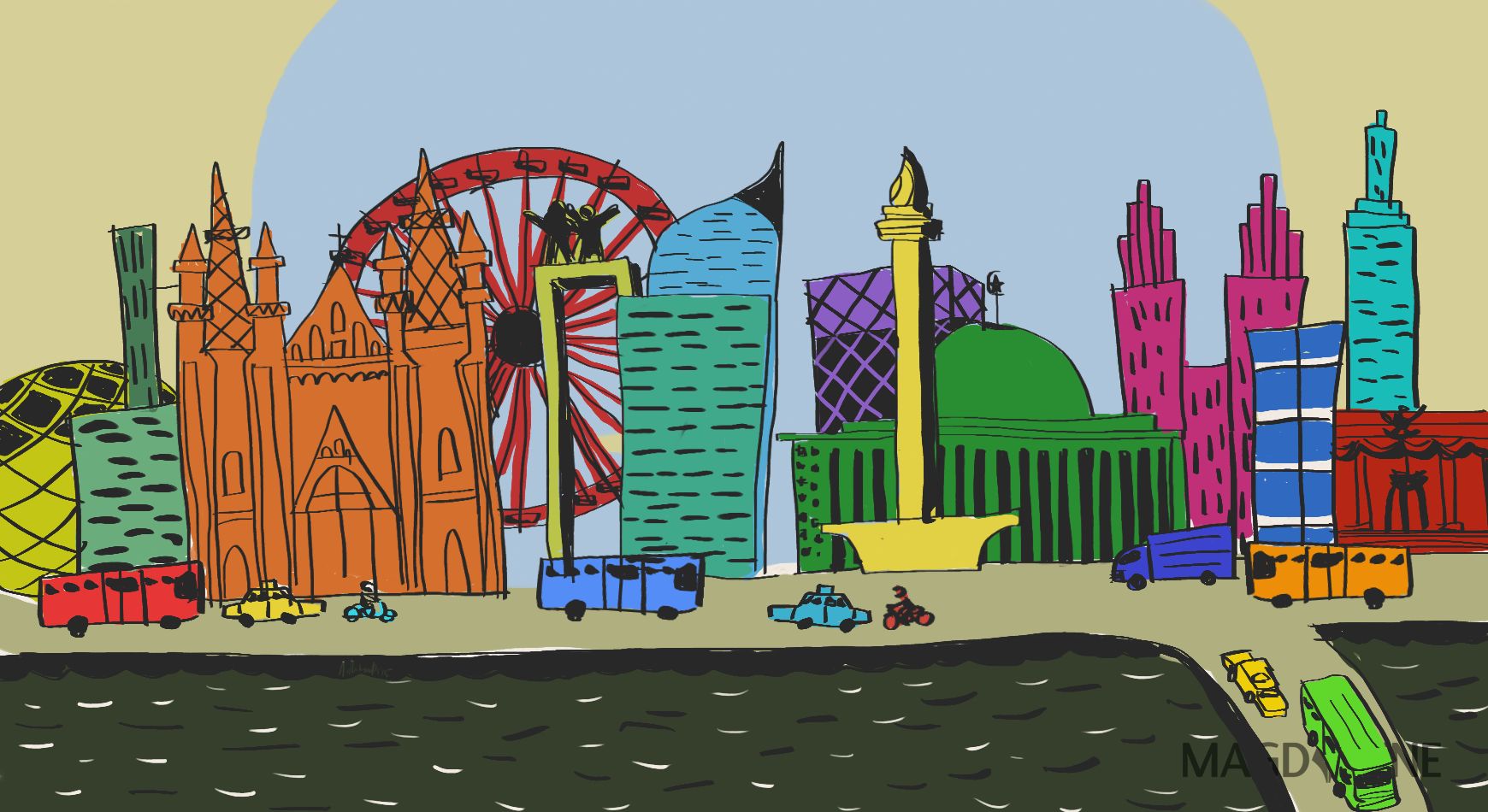Two international events about cities and infrastructure were held in Jakarta over three days last week.
The first, the New Cities Summit 2015, was the fourth of its kind, following events in previous years in New York, Sao Paulo and Dallas. The event was held by the Paris-based New Cities Foundation, working with the Jakarta city administration. Conducted simultaneously was the Indonesia Green Infrastructure Summit (IGIS) 2015, a cooperation between the Indonesian Chamber of Trade and Commerce and the World Bank.
If the New Cities Summit speaks about world cities, including Jakarta, IGIS focuses on infrastructure, development and investment. It was too bad that both events occurred at the same time, because they would’ve complemented each other.
I picked the New Cities Summit this year. Having attended IGIS last year, I saw that it offered more or less the same thing this year. Featuring speakers from various government ministries, IGIS continued its focus on infrastructure investment. I was also curious to find out more about the New Cities Foundation, how a five-year-old organization could hold a world-class event. The organization aims to help form a better urban future by creating and spreading ideas and solutions through events, research, and urban innovation projects.
While IGIS is the embodiment of a typical top-down policy approach with the state playing a strong role in funding and innovation, the New Cities Summit focuses on a city’s ability that exceeds the role of the state. The Jakarta administration had quite a presence in this year’s event, with at least six speakers, from the deputy governor to the head of Jakarta Smart City technical implementation unit.
A series of speakers at the New Cities Summit gave various presentations that inspired and tempted participants. However, it is important to note that such presentations must be seen with conditions and within a context.
Before watching the presentations from Paris, New York, Singapore and Seoul, we must keep in mind that these are cities in developed countries, the so-called Global City, according to Saskia Sassen, or the center of global economy agglomeration. A typical global city is located in the Northern Hemisphere and certainly in a developed country.
A Global City no longer has to deal with basic infrastructures issues, like transportation, clean water and sanitation. To people who run these Global Cities, city branding is more than just creating logos and sites. The solutions presented sometimes look so easy, without any problems, so they can tempt decision makers participating in the event to implement the same things in their respective cities. But such a paradigm is dangerous for the sustainability of the cities.
In the field of architecture and urban economy, the term “Bilbao Effect” refers to the massive revitalization efforts of the city of Bilbao in Spain in various sectors, from transportation, hotels to their cultural center. However, many decision makers often do not see the Bilbao Effect beyond the spectacularly-designed Guggenheim Bilbao Museum.
The success of Bilbao in transforming a poverty-plagued city inspired other cities to compete to build their own magnificent museums. But in the process, they often forgot the important things: maintaining the originality of the city and ensuring it is prepared for such a transformation.
Urban problems cannot be healed by generic drugs originated from best practices.
The Bilbao Effect has also hit some Indonesian cities. They aspire to build things instantly, to construct huge structures designed by world-class architects, in hopes to lure tourists and eventually attract investment to improve the existing infrastructure. This is nothing but wishful thinking.
Cities in Indonesia are unique and they should not just copy other cities in the world. I still can’t forget “Jomblo Park” (singles park) in Bandung, West Java – with the love locks and the installation art bearing the word “Love” decorating the park – and how it was closed down by the very government that opened it.
The city government shut the park down temporarily last year to remove the installation following condemnation from many people, who were embarrassed because it was a poor imitation of Robert Indiana’s installation. And the love locks copied those in Paris, whose administration, ironically, removed the locks from one the bridges recently because of the damage they were causing to the bridge.
An event like New Cities Summit is highly beneficial for attendees: they can learn quickly,by seeing examples, and eventually create dialogue. But learning is not the same as copying. Each city has its own unique characteristics, challenges and potential. Urban problems cannot be healed by generic drugs originated from best practices.
Blatant imitation is an embarrassment in the world of design. Another example occurred recently in Bandung during the commemoration of the Asian African Conference, during which a red, blue and yellow umbrella installation popped up on Jl. Otto Iskandar Dinata (Otista). As it turned out, it was a cheap replica of another installation in Agueda, Portugal.
Ivo Taveras created the installation to stimulate the spatial experience through color sensation. Agueda is located far above the Equator and it certainly offers a different color and spatial sensation from tropical Bandung.
Start learning from discussions and stop imitating or implementing anything that looks good in presentations or in other cities.
If I may suggest, local government heads or government urban planners should stop doing comparative studies. It is better to find out a city’s own potential, conducting discussions with the community and in collaboration with people.
At the end of the day, the locals will be the ones who live and experience the city; not people from Agueda, Paris or Philadelphia.
Elisa Sutanudjaja is an Eisenhower fellow, editor of the book ‘Kata Fakta Jakarta’ and co-founder of Rujak Center for Urban Studies. She actively promotes social change and open data, and she is a Jakarta resident. Follow @elisa_jkt on Twitter.
This article was originally written in Indonesian and was first published by Rappler.com, a Manila-based social news network, where stories inspire community engagement and digitally fuelled actions for social change.








Comments